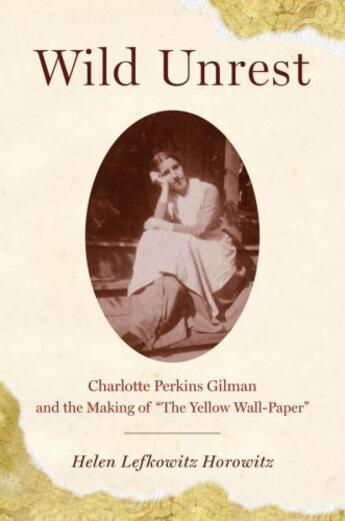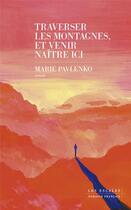-
Nombre de pages : (-)
-
Collection :
(-)
-
Genre :
(-)
-
Thème :
Non attribué
-
Prix littéraire(s) :
(-)
Résumé:
In Wild Unrest, Helen Lefkowitz Horowitz offers a vivid portrait of Charlotte Perkins Gilman in the 1880s, drawing new connections between the author's life and work and illuminating the predicament of women then and now.
"The Yellow Wall-Paper" captured a woman's harrowing descent into... Voir plus
In Wild Unrest, Helen Lefkowitz Horowitz offers a vivid portrait of Charlotte Perkins Gilman in the 1880s, drawing new connections between the author's life and work and illuminating the predicament of women then and now.
"The Yellow Wall-Paper" captured a woman's harrowing descent into madness and drew on the author's intimate knowledge of mental illness. Like the narrator of her story, Gilman was a victim of what was termed "neurasthenia" or "hysteria"--a "bad case of the nerves." She had faced depressive episodes since adolescence, and with the arrival of marriage and motherhood, they deepened. In 1887 she suffered a severe breakdown and sought the "rest cure" of famed neurologist S. Weir Mitchell. Her marriage was a troubled one, and in the years that followed she separated from and ultimately divorced her husband. It was at this point, however, that Gilman embarked on what would become an influential career as an author, lecturer, and advocate for women's rights.
Horowitz draws on a treasure trove of primary sources to illuminate the making of "The Yellow Wall-Paper": Gilman's journals and letters, which closely track her daily life and the reading that most influenced her; the voluminous diaries of her husband, Walter Stetson, which contain verbatim transcriptions of conversations with and letters from Charlotte; and the published work of S. Weir Mitchell, whose rest cure dominated the treatment of female "hysteria" in late 19th century America. Horowitz argues that these sources ultimately reveal that Gilman's great story emerged more from emotions rooted in the confinement and tensions of her unhappy marriage than from distress following Mitchell's rest cure.
Wild Unrest adds immeasurably to our understanding of Charlotte Perkins Gilman, uncovering both the literary and personal sources behind "The Yellow Wall-Paper."
Donner votre avis















